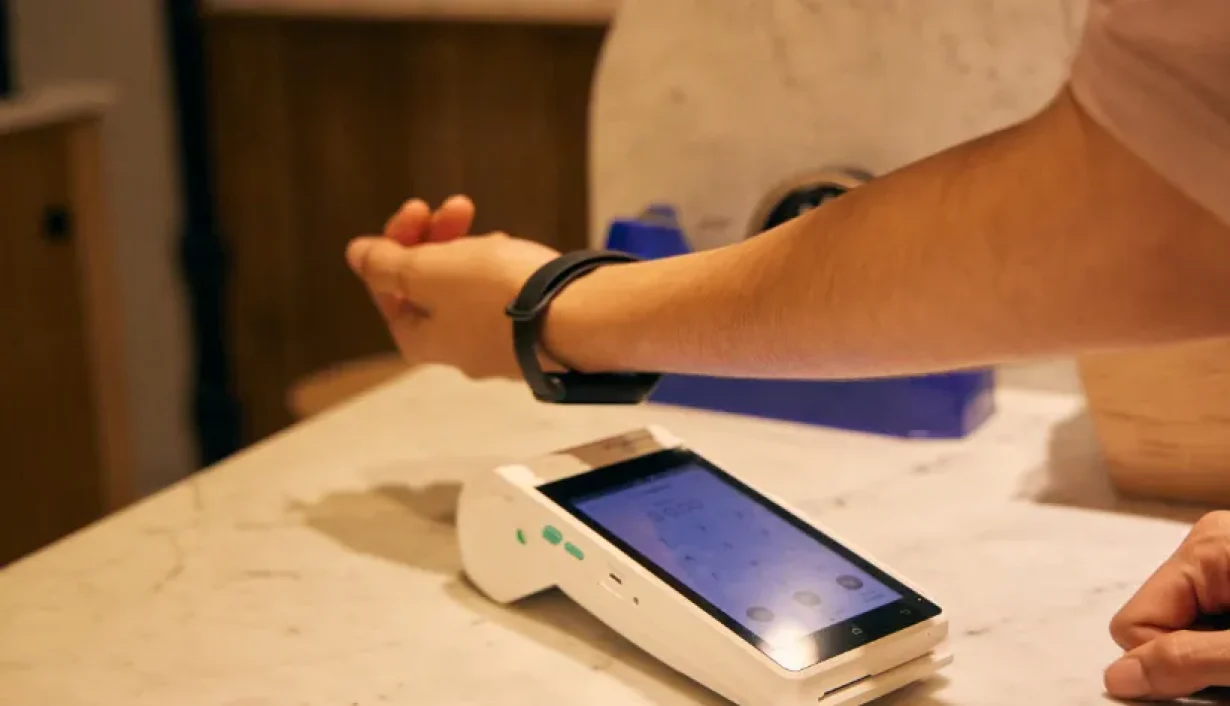
Ever walked up to an office door and, instead of fumbling for keys, just tapped a card to a sleek device? That’s the magic of NFC access control in action. No more clunky keys or forgotten passwords – just a tap and you’re in. This touchless, fast, and efficient system is just one glimpse into the power of NFC technology.
As NFC technology becomes increasingly ubiquitous, 13.56 MHz NFC tags have become the go-to for seamless wireless data exchange across a huge range of smart devices. Think beyond just access control – these versatile tags are transforming industries from retail and payments to logistics and healthcare. The key is variety: there’s a diverse world of NFC tags out there, each designed with specific features and uses in mind.
Understanding NFC Tags: How Do They Actually Work?
Let’s break it down. NFC (Near Field Communication) tags are essentially tiny marvels of engineering. Inside each tag is a microchip (IC) and an antenna. These components work together to communicate wirelessly with NFC-enabled devices like your smartphone or an NFC reader. The really clever part? NFC tags are battery-free. They use radio frequency identification (RFID) to interact with reading devices. When an NFC reader gets close, it sends out radio waves that energize the chip in the tag. The tag then transmits the data stored in its chip back to the reader via the antenna. The reader decodes this information and takes the appropriate action – unlocking a door, processing a payment, or pulling up product details.
What makes 13.56 MHz tags stand out? Unlike other frequencies like 125 kHz or 2.45 GHz, 13.56 MHz offers an optimal balance. It provides better signal penetration than higher frequencies and a short read range (just a few centimeters). This limited range is a security feature, ensuring data exchange is accurate and less vulnerable to eavesdropping. For applications where precision and security are key, 13.56 MHz is the sweet spot.
Exploring the Variety: Different Types of 13.56 MHz NFC Tags and Real-World Applications
The growing popularity of NFC means 13.56 MHz NFC tags are now integral to countless operations across diverse sectors. You’ll find them categorized by shape, function, and how they’re applied. Each type brings unique strengths and offers tailored solutions for specific challenges. Let’s explore some common NFC tag types and see how they’re making an impact.
NFC Cards: The Familiar Form Factor
NFC cards are designed in the familiar credit card or ID card shape. Don’t let the traditional look fool you – inside these cards are sophisticated NFC chips and antennas. They boast significant storage capacity, making them perfect for applications needing identity verification or larger data storage.
Applications:
Payment Cards: Contactless payments are now commonplace, and NFC cards power transit passes, bank cards, and digital wallets. Just tap to pay – quick, easy, and hygienic.
Membership Cards: Businesses use NFC membership cards to build customer loyalty. Rewards, discounts, and personalized service are all enabled with a simple tap.
Access Cards: From offices to hotels and schools, NFC access cards are the modern key. They ensure secure entry for authorized personnel only, streamlining access management.
NFC Labels: Stick-and-Go Versatility
NFC labels are thin, adhesive, and ready to stick onto products, devices, or packaging. No screens here – they’re designed to be read by smartphones or NFC readers, instantly providing access to stored information. Available in circles, squares, rectangles, and more, NFC labels adapt to diverse needs.
Applications:
Product Tracking: Retail and logistics rely on NFC labels for inventory control, shipment monitoring, and data storage. Real-time stock updates and streamlined logistics become a reality.
Product Information: Want to know more about a product? Scan an NFC label for details like production dates, ingredients, and usage guides, enhancing the consumer experience.
Advertising and Promotions: Smart marketing gets smarter with NFC labels in ads. Customers scan for promotions, coupons, event invites, and deeper brand engagement.
NFC Rings: Wearable Tech at Your Fingertips
NFC rings are wearable tech that fits right on your finger, crafted from durable materials like metal or plastic. An embedded chip lets you transmit data with a simple tap against a reader.
Applications:
Identity Verification: NFC rings act as access keys for offices, schools, and gyms, providing quick and secure entry.
Payment Functionality: Contactless payments are even more convenient with NFC payment rings. Leave your wallet and phone behind – your ring handles the transaction.
Smart Home Control: Integrate NFC rings with smart home systems to control lights, locks, and more, simplifying daily life.
NFC Garment Tags: Fashionably Functional
NFC garment tags are woven into clothing, shoes, and accessories. Made from flexible, durable materials, these discreet tags add functionality without compromising comfort.
Applications:
Fashion and Brand Promotion: Brands are using NFC tags in clothing to offer customers brand stories, styling advice, and exclusive discounts with a quick scan.
Inventory Management: Clothing retail benefits from NFC tags for inventory tracking, reducing stock errors and improving product traceability.
Personalized Experiences: Tailor the shopping journey with NFC tags for personalized offers, recommendations, and exclusive deals, enhancing customer engagement.
NFC Review Cards: Instant Feedback Loops
NFC review cards are small cards or tags designed to collect customer feedback effortlessly. An embedded NFC chip makes surveys and comment submission a breeze.
Applications:
Customer Feedback: After service or purchase, businesses hand out NFC review cards for instant online surveys and feedback collection.
Market Research: Gather immediate customer opinions on products and services with NFC review cards, enabling data-driven improvements.
Event or Conference Feedback: Events and conferences use NFC review cards for attendees to quickly share their experiences and provide valuable insights.
NFC LED Wristbands: Light Up the Experience
NFC LED wristbands combine NFC with LED displays for a powerful tool for identification and information sharing. These wristbands can display basic light signals and exchange data via NFC.
Applications:
Event Management: Large events, festivals, and trade shows use NFC LED wristbands for participant ID, ticket validation, and event information delivery.
Entertainment and Interaction: Amusement parks and venues use NFC LED wristbands as passes, enabling seamless activity participation and personalized experiences.
Promotions and Rewards: Promotional events leverage NFC LED wristbands for instant reward and discount access, boosting engagement and excitement.
Conclusion: The Expanding World of NFC Tags
13.56 MHz NFC tags are transforming how we interact with technology across industries. They streamline data exchange, enhance user experiences, and offer solutions for a vast array of applications. From payments to product tracking and beyond, NFC tags are becoming essential in our connected world. And as technology evolves, the potential for NFC tag applications will only continue to grow, driving innovation and efficiency across sectors.
FAQs: Your NFC Tag Questions Answered
Are 13.56 MHz NFC tags universally compatible across different brands?
Yes! 13.56 MHz NFC tags adhere to global standards like ISO 14443 and ISO 15693. This ensures compatibility with any NFC-enabled device that meets these standards, regardless of brand. Enjoy seamless interoperability across different systems and devices.
What are some key applications of NFC tags in logistics?
Logistics companies are leveraging 13.56 MHz NFC tags for item tracking and inventory management. Each tag stores unique ID data, easily read by NFC devices. This allows real-time tracking of goods’ location and status, monitoring transport conditions, and efficient warehouse inventory checks, minimizing errors and maximizing efficiency.
Can 13.56 MHz NFC tags withstand harsh environments?
The durability of 13.56 MHz NFC tags depends on their construction. Standard tags handle a wide temperature range. For extreme conditions (heat, cold, humidity, chemicals), opt for NFC tags with protective casings. Waterproof and dustproof options use specialized packaging to protect the internal chip, ensuring reliable performance in demanding environments. Choose NFC tags designed for your specific environmental challenges.
Rec-Products
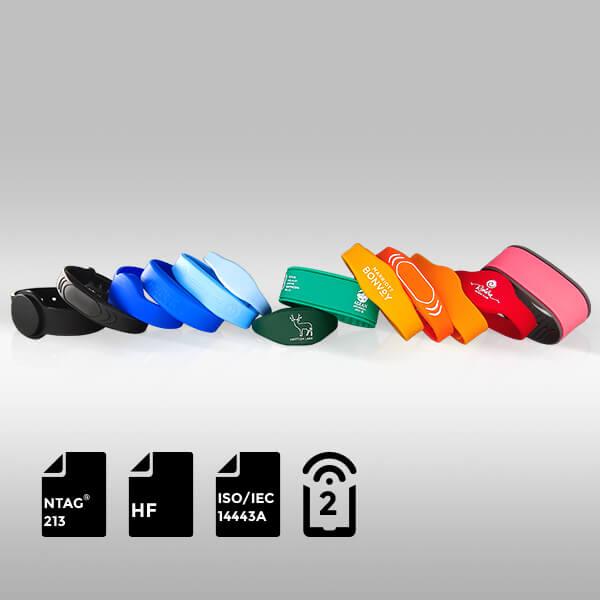
RFID Silicone Wristband NTAG®213
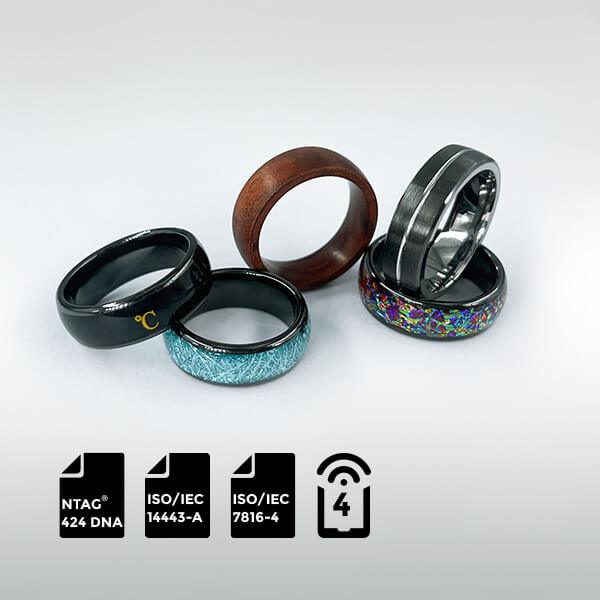
NXP NTAG® 424 DNA NFC Ring
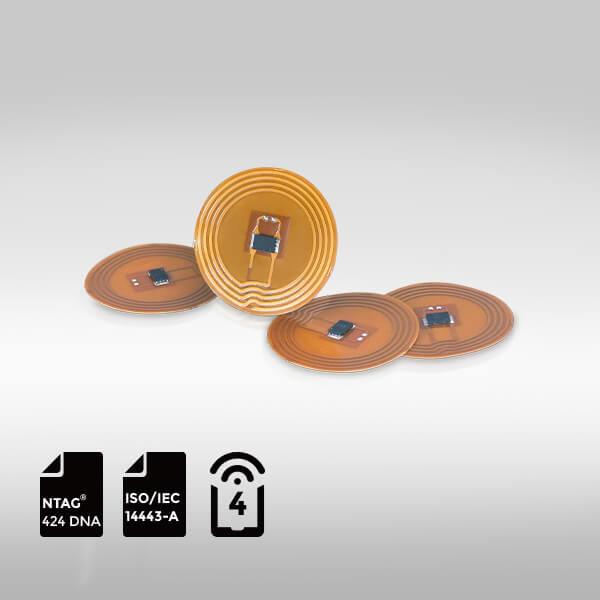
NXP NTAG® 424 DNA NFC FPCB Tag
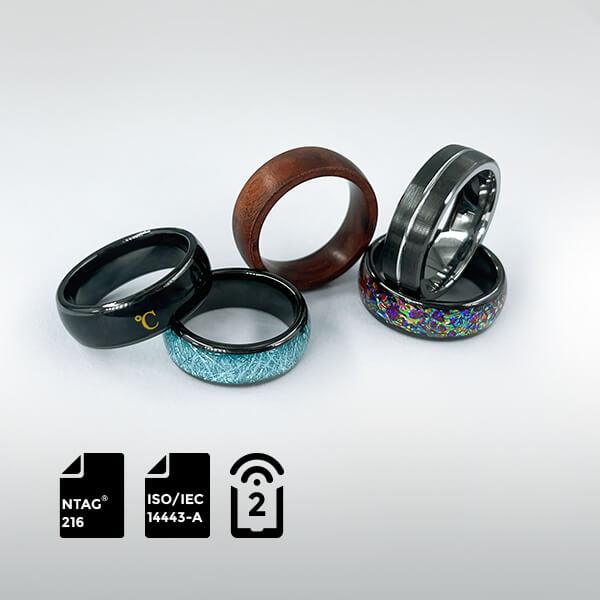
NXP NTAG® 216 NFC Ring
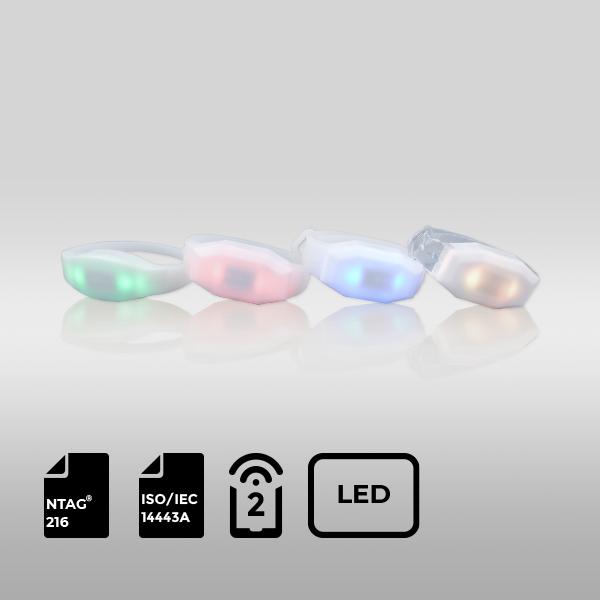

RFID Antenna UHF
15-Meter Cable for UHF RFID Fixed Reader
UHF Tag
4″x2″ 860-960MHz UHF RFID Label RFID M4D
UHF Tag
4″x4″UHF RFID Label Alien H3 | ISO18000-6C
RFID Antenna UHF
5-Meter Cable for UHF RFID Fixed Reader
HF Card
ABS RFID KEY-FOB Tag RFID Classic 1K
HF Card
ABS RFID KEY-FOB Tag RFID Classic 4K
HF Card
ABS RFID KEY-FOB Tag RFID Ultralight C
HF Tag
ABS RFID KEY-FOB Tag RFID Ultralight EV1
LF Card
ABS RFID KEY-FOB Tag ATA5577
LF Card
ABS RFID KEY-FOB Tag EM4200
HF Card
ABS RFID KEY-FOB Tag EM4305
HF Card
ABS RFID KEY-FOB Tag RFID TAG 213